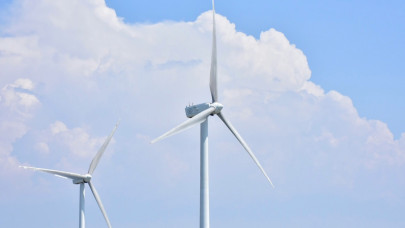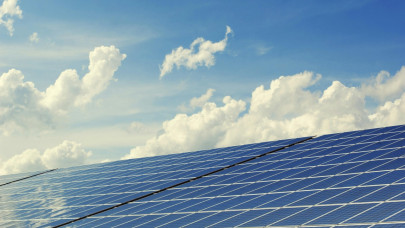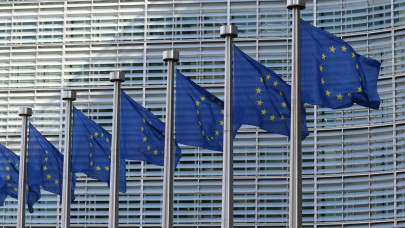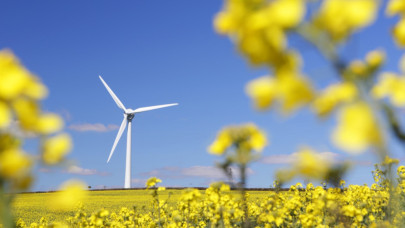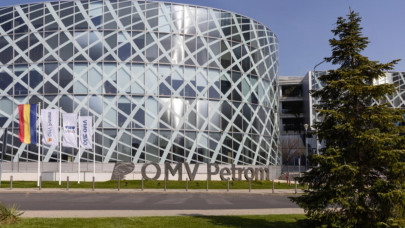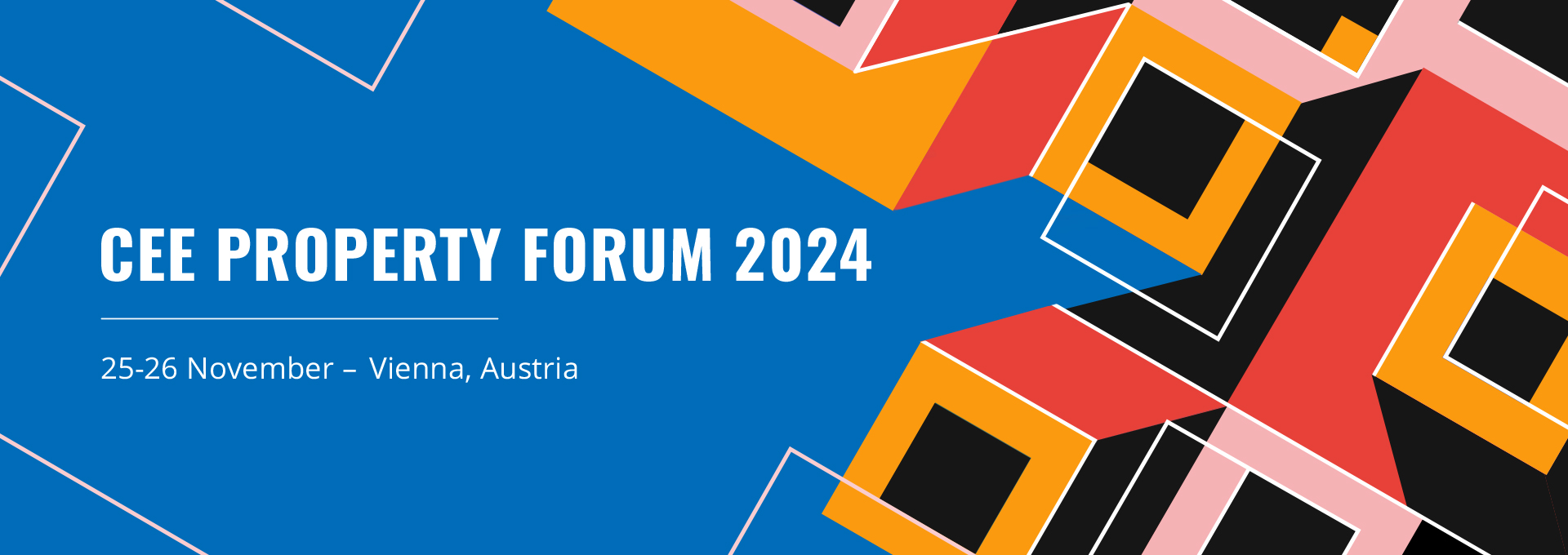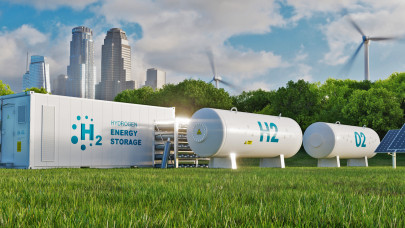What are ENGIE Romania's long-term goals and strategies to contribute to the green energy transition in Romania?
ENGIE Group has set a global development strategy with the goal of accelerating the transition to a carbon-neutral economy by 2045. At ENGIE Romania, our ambition aligns with this vision through three key strategic pillars: expanding renewable energy production, supporting our clients in their decarbonization journeys, and greenifying the natural gas distribution network.
Expanding Renewable Energy Production
As a major player in the global and Romanian renewable energy markets, ENGIE is committed to driving the clean energy transition. Our strong ambitions and consistent results position us as a trusted partner in building a sustainable future.
In Romania, ENGIE currently operates 211 MW of renewable energy capacity, including 3 wind farms with a combined installed capacity of 178 MW and 5 photovoltaic parks totaling 33 MW, strategically distributed across the country.
Recent milestones include the acquisition of an operational 80 MW wind farm in Chirnogeni, Constanța County, and the development of Romania's largest hybrid power plant—combining wind and solar energy—located in the eastern region, with a total installed capacity of 57 MW.
We are also preparing to commission a new 37.2 MW photovoltaic park in Ariceștii-Rahtivani, Prahova County. Overall, our investments in these projects have exceeded 320 million euros.
Supporting Clients in Their Decarbonization Efforts
Another cornerstone of our strategy is helping our customers transition to greener, more efficient energy use. We offer a broad range of smart, digital, and flexible energy management solutions tailored to both residential and business clients.
These include:
· Autonomous green electricity production using solar panels
· Integrated solutions with heat pumps and photovoltaic systems
· Technologies for remote consumption monitoring
· Electric vehicle charging infrastructure
In the evolving electricity market, ENGIE Romania supports corporate clients with predictable, long-term renewable energy supply solutions to help them stabilize costs and achieve sustainability goals.
A key example is the long-term virtual Power Purchase Agreement (vPPA) signed in 2023 with Orange Group in Romania, enabling Orange to meet 30 GWh of its annual electricity needs with solar energy. In 2024, Orange Romania extended this partnership with another 10-year vPPA, securing approximately 40 GWh of renewable energy from one of ENGIE's wind farms.
More and more clients—residential and commercial alike—are opting to generate their own electricity using photovoltaic panels. We also promote sustainable mobility solutions, offering services like electric vehicle charging stations powered by renewable energy, as well as consulting, installation, maintenance, and digital monitoring of infrastructure.
Greenifying the Gas Distribution Network
Since its privatization in 2005, ENGIE Romania has extended its gas distribution network by 9,630 km—roughly the distance from Bucharest to Los Angeles—and rehabilitated over 4,600 km of pipeline. These efforts have involved investments of over 1.234 billion euros, bringing the total network length to 23,800 km by the end of 2023.
In 2024 alone, investments in the distribution network amounted to 534 million RON, focusing on system modernization and expanding access by connecting new users.
We are also working to prepare the network for green gases by leveraging existing infrastructure. As part of this effort, ENGIE Romania is expanding its portfolio to include biomethane, supporting the decarbonization of client operations. In a landmark achievement, we obtained Romania's first license for the supply of biogas and biomethane in November 2024.
How does ENGIE Romania plan to expand its renewable energy portfolio in the coming years, and what specific technologies will be prioritized?
ENGIE Romania has ambitious plans to expand its renewable energy portfolio, aiming to reach a capacity of 1 GW by 2030. The company is focused on developing renewable energy production assets, prioritizing wind and solar technologies. The strategy includes a balanced mix of internally developed projects and the acquisition of operational assets or project rights.
Currently, ENGIE Romania is working on several significant projects, totalling a capacity of 750 MW, which are in various stages of development. Some of these projects are expected to be operational this year.
Additionally, ENGIE plans to integrate battery storage systems to optimize production, support grid stability, and enable participation in the ancillary services market.
What are the key regulatory challenges and opportunities for renewable energy development in Romania, and how is ENGIE Romania addressing them?
The energy transition is a core priority for ENGIE, both globally and in Romania. Our ambition is to become the leading utility in the energy transition by 2030 and to reach carbon neutrality by 2045. In this context, accelerating the development of renewable energy in Romania is essential—but the pace of progress is shaped by several regulatory and infrastructure-related challenges.
One of the main issues we face is the lack of predictability in the regulatory and fiscal environment. Sudden changes—such as new taxes—can undermine investor confidence and slow down the pace of investments. For the sector to grow sustainably, it's vital that we have a stable, transparent, and forward-looking legislative framework.
We're also seeing delays in permitting processes, with complex and time-consuming approval procedures for new solar and wind projects. Streamlining and digitalizing these processes would make a big difference and send a strong signal to investors.
Another challenge is limited grid capacity and underdeveloped energy infrastructure, which restricts the integration of new renewable projects into the system. Addressing this will require coordinated planning and sustained investment in both transmission and distribution networks.
In addition, the market for Power Purchase Agreements (PPAs) is still in its early stages in Romania, making it harder for developers to secure long-term financing. A clear and reliable framework for PPAs would help unlock much-needed investment and provide more stability for both producers and consumers.
Finally, clarity around the transfer of Guarantees of Origin for green energy—especially across borders—is still lacking. Having a unified system for these certificates is essential for building investor trust and supporting the development of cross-border renewable energy markets.
At ENGIE Romania, we're actively working to overcome these challenges—through dialogue with policymakers, partnerships within the industry, and ongoing investments in renewable projects. With the right regulatory support and infrastructure development, Romania has the potential to become a regional leader in green energy—and we're committed to helping make that happen.
How does the renewable energy market in Romania compare to other European countries in terms of potential, policy support, and investment opportunities?
Romania has significant potential in the renewable energy sector, both in terms of natural resources and as part of the European Union's green transition agenda. The country benefits from favorable geographic conditions for both wind and solar energy, especially in regions such as Dobrogea and the southern part of the country. This natural potential places Romania among the more promising markets in Central and Eastern Europe.
From an investment perspective, Romania offers competitive opportunities, especially as grid infrastructure is being modernized and the need for renewable energy solutions increases in both the residential and industrial sectors. The increasing demand for Power Purchase Agreements (PPAs) from large corporations also makes the market more attractive.
At ENGIE Romania, we see the renewable energy market not only as a growth driver, but also as a strategic pillar for the country's long-term energy security and sustainability. Our investments – including hybrid projects combining wind and solar, as well as support for green gases like biomethane – reflect our confidence in the country's direction and potential. While challenges such as permitting and grid integration still exist, the momentum is positive, and we



